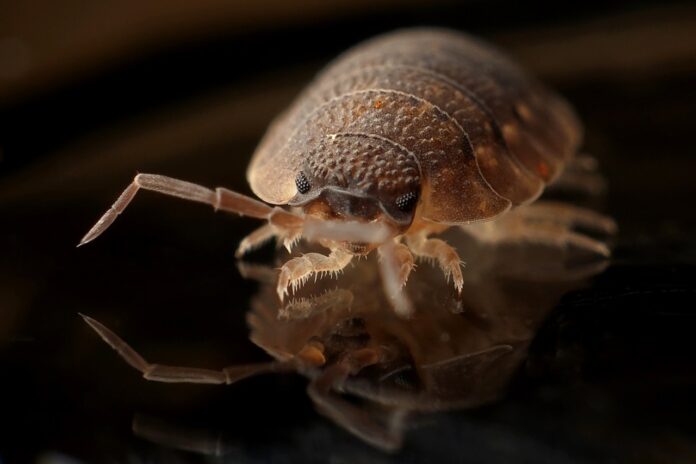Your bedroom is essentially your safe haven; it’s the place where you can relax and unwind at the end of the day, but that can quickly change when you have unwanted guests like bed bugs. Not to mention, they can be quite difficult to spot, causing them to become more of a nuisance in your home and therefore harder to get rid of.
Fortunately, experts at Bed Kingdom have provided seven signs to look out for and some tips to remove them from your bedroom.
Unusual smell
One of the early signs of bed bugs is a strange, musty scent lingering in your bedroom, despite there being no clear cause of it being there, such as a dirty pile of clothes. When bed bugs feel threatened, they emit what is called alarm pheromones which have a faint smell of raspberries, cilantro, or almonds – and in severe bed bug cases, this smell we be mixed with the odour of dead bugs and shed cell casings which creates a rusty scent.
Bites
If you wake up with red, itchy bites, this could be a sign of bed bugs as they typically feed on blood during the night. Usually, bites will appear on arms, hands, and legs and will be in small clusters of a few bites, but they can also show up in single bites. These bites are not usually dangerous, but some people can be allergic – so if you experience extreme itchiness, swelling, blisters, or a fever it’s crucial to seek help from a medical professional.
Blood stains
Once a bed bug is finished feeding itself, the blood can leak out if you squash them during your sleep by sudden movements like rolling over. If you notice any small splotches of blood on your bed sheets or clothing, check for anything on your body first that could be the cause, like a scab. If there’s no visible cause of the blood, it’s likely that these stains occurred from bedbugs.
Dark, brown marks
Dark marks from bed bug droppings about the size of a pen tip can appear on mattresses, sheets, headboards, and even your walls, and they’re a lot smaller than blood stains. They will also give off a faint, rusty smell that contributes to the unusual odour altogether.
Eggs
Bed bug eggs can be hard to spot, as they are only around 1mm long – but they can be found by paying attention to anything that looks like small rice grains in your bed. They can be loosely stuck to different types of surfaces, typically the mattress seams and joints or behind the headboard.
Shell casings
Often easier to spot than the bed bugs themselves, shell casings are an early sign of infestation. Bed bugs shed several times during different lifecycle stages, meaning that their shell casings can come in different sizes – but you can spot them by their yellow, translucent appearance in the seams, folds, and crevices of mattresses, or even other areas such as cracks in walls and furniture.
Live bed bugs
It can be quite a challenge to spot a live bed bug, as they normally look for a hiding place, however with a severe infestation you are more likely to notice them. Adult bed bugs are approximately 4-5mm long, with bed bug nymphs starting at just 1mm. Their hiding spots can be various places from your bed and the area next to it to furniture and your walls.
How to remove them from your bedroom
It can be difficult to completely get rid of bedbugs, especially with a severe infestation, so it’s advised to contact the council or a pest control service to ensure they’re no longer taking over your bedroom. However, there are some steps you can take yourself to put your mind at ease.
- First of all, try to identify all of the areas where the bed bugs could be hiding by using a flashlight and a magnifying glass. This includes your entire bed, cushions, cracks in walls and furniture, loose wallpaper, the seam between wallpaper and the ceiling, and underneath decorations on your wall.
- Wash all of your affected bedding on clothing on a hot wash, as well as using the tumble dryer on a hot setting for a minimum of half an hour. For anything that can’t be washed, place them in plastic bags and leave in the freezer for 3-4 days.
- Using an insecticide is not recommended as some of them can contain harmful chemicals that can be dangerous when used indoors, but you can opt for a bed bug spray to use before vacuuming which is typically safe for mattresses and furniture.
- Clear out any rubbish from your bedroom and put it in the bin, such as magazines, and make space ready to vacuum. Use a vacuum on the entire floor, making sure to get all of the corners – you can use the small wand to get into other areas of the bedroom, such as furniture and cracks in the wall.
A spokesperson from Bed Kingdom has commented: “Getting cosy in bed on an evening is something that many people look forward to at the end of the day, whether it’s to chill out and watch your favourite TV series or perhaps to curl up with a gripping book. Unfortunately, this can be ruined when bed bugs take over your bedroom, so it’s important to know what signs to look out for so that you can get back to relaxing quickly and to avoid a more complicated process of removing them.”
Credit to bedkingdom.co.uk who provided the above post

| [donate]
| Help keep news FREE for our readersSupporting your local community newspaper/online news outlet is crucial now more than ever. If you believe in independent journalism,then consider making a valuable contribution by making a one-time or monthly donation. We operate in rural areas where providing unbiased news can be challenging. |






















